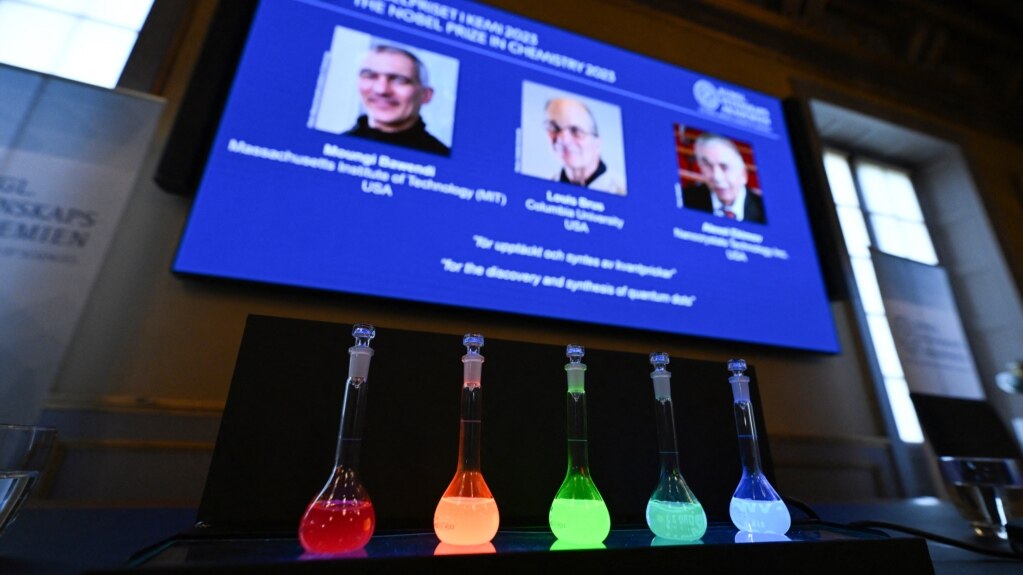Three scientists in the United States won the Nobel Prize in Chemistry on Wednesday. The three won for their discovery of quantum dots, a technology widely used today to make displays for electronic devices and medical imaging.
The Royal Swedish Academy of Sciences awarded the prize to Moungi Bawendi of the Massachusetts Institute of Technology, Louis Brus of Columbia University in New York, and Alexei Ekimov of Nanocrystals Technology.
The academy said the three were honored for their work with particles that “have unique properties and now spread their light from television screens and LED lamps.”
LED lights are electronic lights used all over the world, which use energy very effectively.
Pernilla Wittung Stafshede, a member of the Nobel committee that awarded the prize, said, “We have displays on TVs, in your cellphone, that use quantum dots inside...”
What are quantum dots?
Quantum dots are extremely small particles, called nanoparticles. They are said to be about 1/10,000 the width of a human hair. The dots glow blue, red, green or other colors when exposed to light. The color they give off depends on the size of the particles. Larger dots look red, and smaller dots look blue. The color change is caused by the behavior of electrons in these small spaces.
Physicists had predicted these color-change properties as early as the 1930s. However, it took 50 years of research and development to control the size of quantum dots correctly.
Ekimov and Brus were the early researchers of the technology. Bawendi is credited with developing the production of quantum dots being used today.
Bawendi used the words, “very surprised, sleepy, shocked, unexpected and very honored,” to describe his feelings. Bawendi added he was not thinking about the possible uses of his work when he started researching quantum dots.
“The motivation really is the basic science. A basic understanding, the curiosity of how does the world work? And that’s what drives scientists and academic scientists to do what they do,” he said.
Brus of Columbia University said he did not answer the phone call from the Swedish academy. He finally saw the news online when he got up in the morning.
Brus said the practical uses of quantum dots, like creating the colors in TV screens, are something he was hoping for when he started the work many years ago.
“Basic research is extremely hard to predict exactly how it’s going to work out,” Brus said. “It’s more for the knowledge base than it is for the actual materials. But in this case, it’s both.”
Ekimov is the former chief scientist at Nanocrystals Technology, a company based in New York where he started working in 1999. The Swedish academy credited him with showing how the size of nanoparticles affected the colors in glass.
The three will receive 11 million Swedish crowns, about $1 million, and a gold medal when they collect their Nobel Prizes at the award ceremonies in December.
I’m Dan Friedell.

